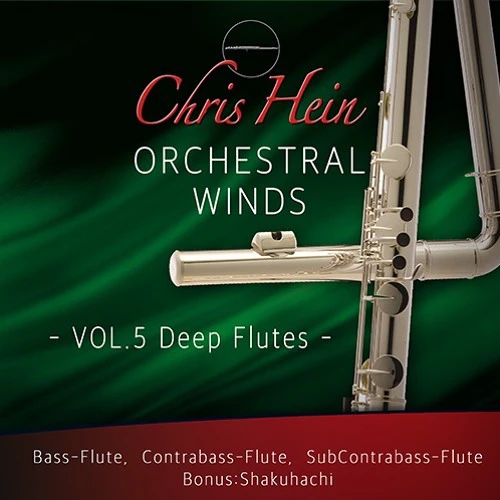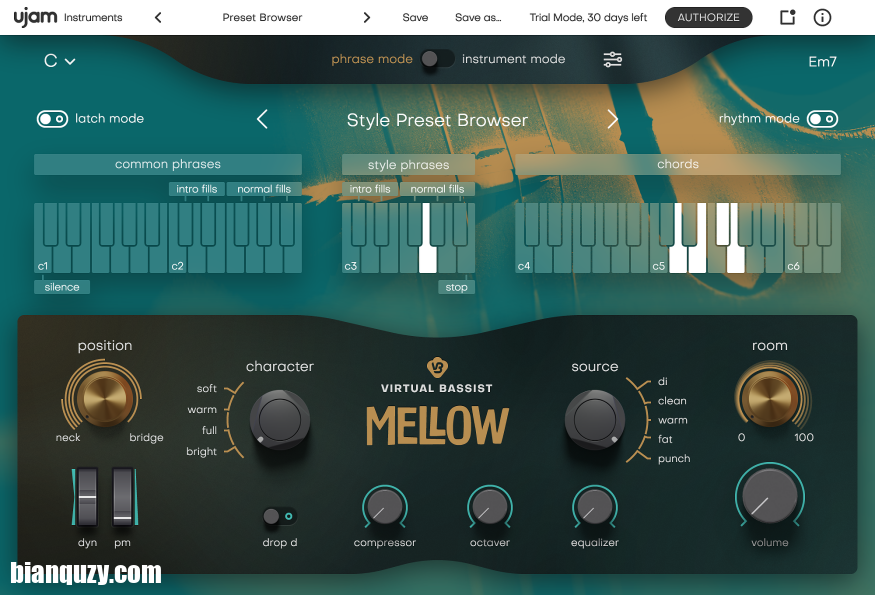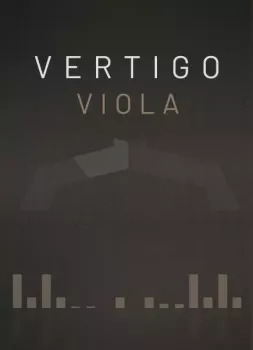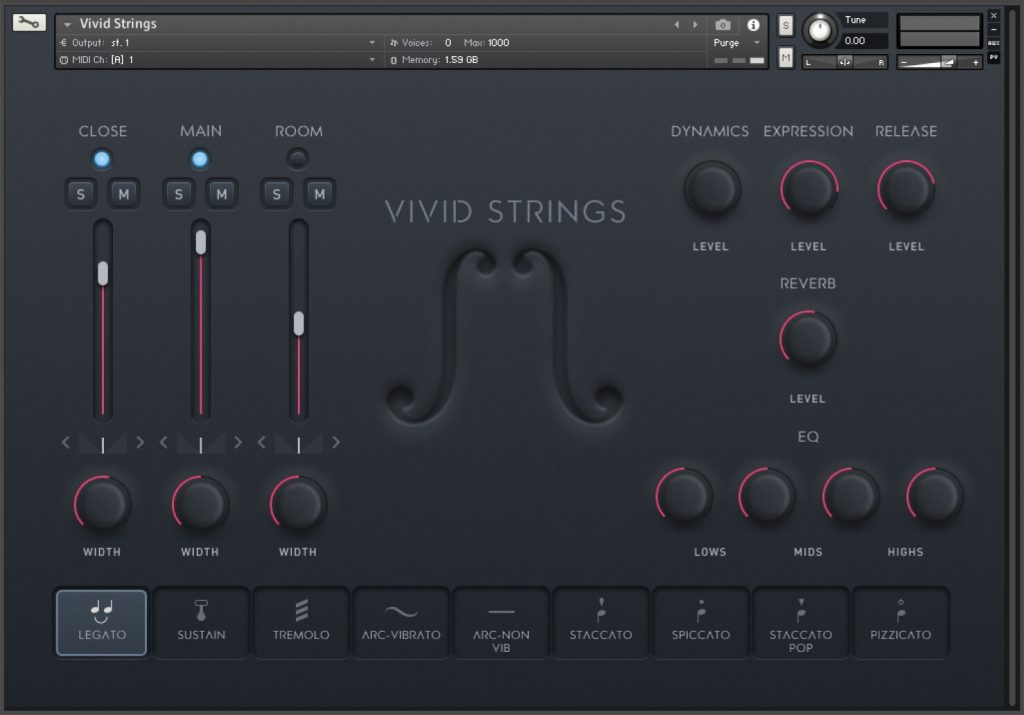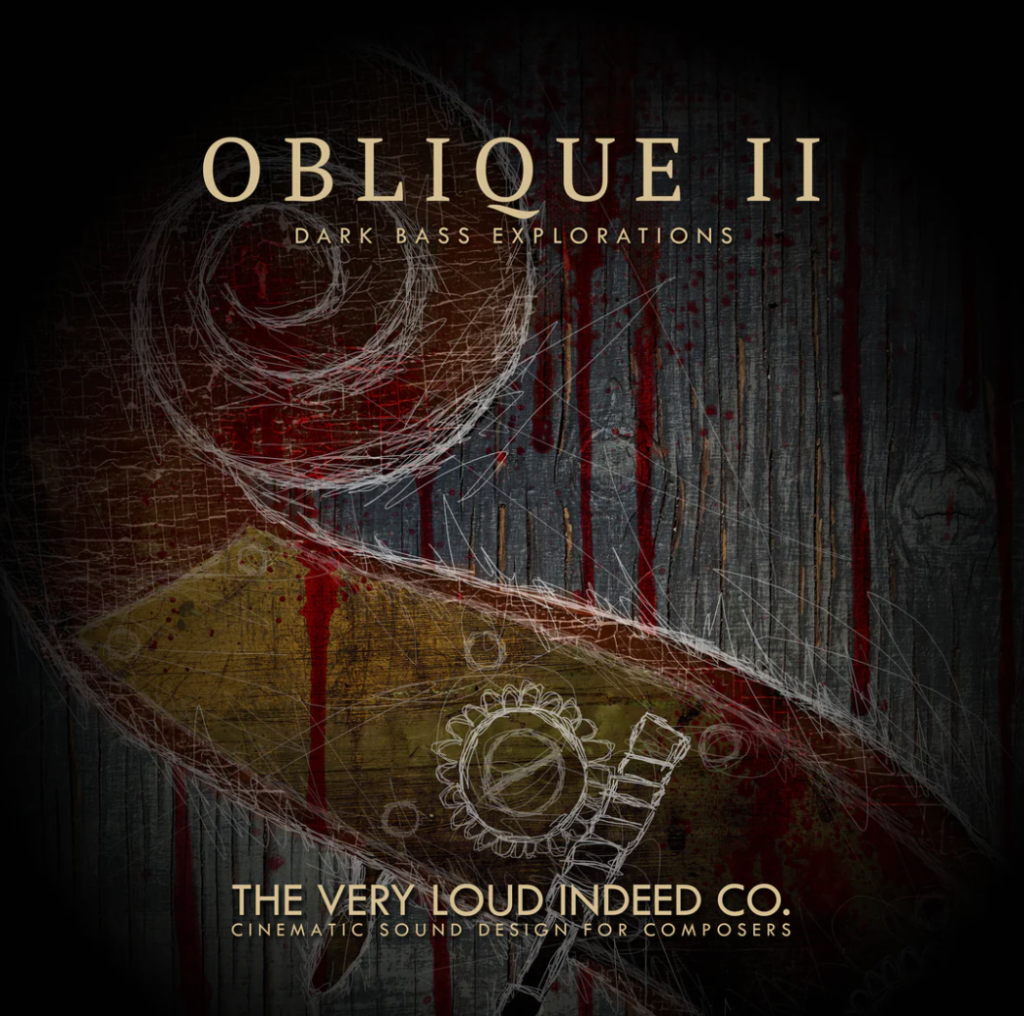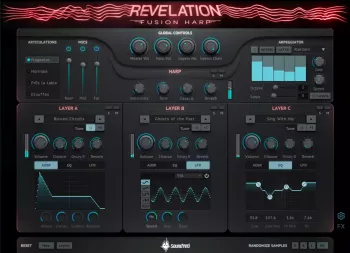CineHarps是一组深度采样的管弦乐竖琴的集合,这些竖琴易于使用,并且加载了各种技术和功能,这使其成为任何作曲家模板中的经典之作。 CineHarps在洛杉矶的索尼影业(Sony Pictures Studios)的米高梅(MGM)评分阶段以各种各样的视角记录下来,可以很好地适合任何组合。
在我们具有里程碑意义的产品CineHarps十周年之际,
Cinesamples自豪地展示了完全重新设计的,深度采样的续集-CineHarps。 CineHarps录制于洛杉矶索尼影业(Sony Pictures Studios)具有历史意义的米高梅(MGM)评分阶段,记录了原始CineHarp的易用性和多种技术,同时增加了原始音频保真度和改进的功能,这使其成为任何作曲家模板中的经典之作。
CineHarps在记分阶段在三个不同的位置进行记录,其中包括多个发音和音色-弹奏的音色,精确的滑音和良好的效果。无论乐曲需要古典竖琴技术还是混合声音设计方法,CineHarps都能为作曲家提供最丰富的竖琴声音。
与所有CineSymphony库一样,CineHarps库不需要您购买任何其他示例播放软件,并且已获得许可与Native Instrument的免费Kontakt Player一起使用。您所需要的只是一个音序器,例如Logic,Cubase,Digital Performer,LIVE,Pro Tools,Cakewalk甚至Apple GarageBand,这样您就可以正常运行了。
特征:
透视推子
CineHarps包括一个新的“透视模式”。启用“透视模式”时,将出现一个滑块,用于在“关闭”,“房间”和“环绕”麦克风透视之间进行平滑的淡入淡出。该滑块自动映射到调制轮,使您能够立即控制仪器的相对深度。
格利斯模式
Gliss模式会根据所选音符和踏板图移调所有白色键。这样可以在白色按键上轻松演奏滑音。当“格里斯模式”按钮处于活动状态时,以较柔和的语调攻击音符时会变得柔和。玩得越快,攻击就越柔和。
提示/技巧:打开Gliss模式并将踏板设置为C大调可以使您半音演奏,但仍然可以以较快的乐句柔化每个音符的开始,这可以产生更逼真的颤音,bisbigliandi和其他类型的演奏。
关闭延迟按钮
在“关闭麦克风”透视图的上方是带有“ D”的黄色小按钮。激活此按钮可使“关闭”透视图的声音延迟大约15毫秒,这会使“关闭”与“房间”和“环绕”透视图对齐,从而使声音更紧。关闭“关闭延迟”可使乐器具有更大的深度和清晰度,这对于在混音中使用它很有用。
速度曲线
速度曲线控件可用于精确输入您要寻找的动态。 Bias Forte使得更容易演奏大声的动态效果,而Bias Piano使得更容易演奏柔和的动态效果。线性允许速度不受影响地通过。 Velocity Curve控件还可以用来补偿MIDI键盘的硬或软动作。您可以通过单击并拖动鼠标来自定义绘制速度曲线。
释放模式
释放模式旋钮可以改变播放释放的方式。 “静音”模拟竖琴手在音符释放时立即将琴弦阻尼,并“使振动”。允许该字符串在不考虑任何音符发行的情况下,在整个持续时间内响起。 “ Normale”为释放提供适度的衰减。该控件与“释放音量”控件一起可用于输入您要查找的确切的释放行为类型。
轮循借款
RR借用旋钮将周围的音符用作附加的循环演奏。值为6时,借贷最高可达+/-三音,每个音符最多可提供12个轮询。值为零时,每个动态级别仅扮演两个轮询。较高的值会导致更多的轮询和更多的色调变化。
动态范围
动态范围旋钮可增加或减少仪器的整体动态范围。完全将旋钮向上旋转时,低动态几乎完全听不见,高动态则非常响亮。完全向下旋转旋钮时,乐器将以相同的感知音量播放所有记录的动态层。
船员船员
制作人:迈克尔·巴里(Michael Barry)和迈克尔·帕蒂(Michael Patti)
项目总监:Tim Starnes
Kontakt脚本:Ben Chrisman
录音工程师:Adam Michalak
混合工程师:Tim Starnes
样本编辑:Elan Hickler,Casey Merhige,Elvis Bates
品质保证:Elisa Rice
需要Kontakt 5.6.8及更高版本(与免费的Kontakt Player以及Kontakt的付费完整版兼容)
主页
http://cinesamples.com/product/cineharps
CineHarps is a collection of deeply sampled orchestral harps that’s easy to use and is loaded with techniques and features that will make this a classic in any composer’s template. Recorded with wide variety of perspectives at the MGM Scoring Stage at Sony Pictures Studios in Los Angeles, CineHarps will fit nicely into any mix.
For the 10th anniversary of our landmark product CineHarps,
Cinesamples is proud to present the completely re-imagined, deeply-sampled sequel – CineHarps. Recorded at the historic MGM Scoring Stage at Sony Pictures Studios in Los Angeles, CineHarps captures the ease of use and varied techniques of the original CineHarp while adding pristine audio fidelity and improved features that will make this a classic in any composer’s template.
Recorded in three distinct positions on the scoring stage, CineHarps includes multiple articulations and timbres – plucked patches, precise glissandi, and incredibly robust effects. Whether a composition calls for classical harp techniques or a hybrid sound design approach, CineHarps offers composers the richest harp sounds available.
As with all CineSymphony libraries, CineHarps library does not require you to purchase any additional sample playback software, and is licensed to work with the Native Instrument’s free Kontakt Player. All you need is a sequencer like Logic, Cubase, Digital Performer, LIVE, Pro Tools, Cakewalk, or even Apple GarageBand and you’ll be up and running.
FEATURES:
The Perspective Fader
CineHarps includes the addition of a new Perspective Mode. When Perspective Mode is turned on, a slider appears that performs a smooth crossfade between the Close, Room, and Surround microphone perspectives. This slider is automatically mapped to the mod wheel, giving you the ability to instantly control the relative depth of the instrument.
Gliss Mode
Gliss Mode transposes all of the white keys according to the selected notes and pedal diagram. This allows for easy playing of glissandi on the white keys. When the Gliss Mode button is active, note attacks in faster phrases are gently softened. The faster you play, the softer the attack.
Tip/Trick: Turning on Gliss Mode and leaving the pedals set to C major allows you to play chromatically, but still softens the onset of each note in faster phrases, which can result in more realistic trills, bisbigliandi and other types of playing.
Close Delay Button
Above the Close microphone perspective is small yellow button marked with a “D”. Activating this button delays the sound of the Close perspective by approximately 15ms, which time aligns the Close with the Room and Surround Perspectives, resulting in a tighter sound. Turning off the Close Delay gives the instrument more depth and definition, which can be useful for featuring it in the mix.
Velocity Curve
The Velocity Curve control can be used to dial in exactly the dynamic you are looking for. Bias Forte makes it easier to play louder dynamics, and Bias Piano makes it easier to play soft dynamics. Linear allows the velocities to pass through unaffected. The Velocity Curve control can also be used to compensate for a MIDI keyboard with an undesirably hard or soft action. You can custom-draw a velocity curve by clicking and dragging with the mouse.
Release Mode
The Release Mode knob changes the way releases are played. “Muted” simulates the harpist immediately dampening the string at the note release, and “Let Vib.” allows the string to ring out for its full duration ignoring any note releases. “Normale” provides a moderate decay to the release. This control along with the Release Volume control can be used to dial in the exact type of release behavior you are looking for.
Round Robin Borrowing
The RR Borrowing knob employes surrounding notes as additional round robins. A value of 6 results in up to +/- a tritone of borrowing providing up to an additional 12 round robins per note. A value of zero only plays two round robins per dynamic level. Higher values result in more round robins and more tonal variation.
Dynamic Range
The Dynamic Range knob can increase or decrease the overall dynamic range of the instrument. With the knob turned all the way up, low dynamics are almost completely inaudible and higher dynamics are very loud. With the knob turned all the way down the instrument plays all of the recorded dynamic layers, but at the same perceived volume.
CINEHARPS CREW
Produced by: Michael Barry and Michael Patti
Project Director: Tim Starnes
Kontakt Scripting: Ben Chrisman
Recording Engineer: Adam Michalak
Mix Engineer: Tim Starnes
Sample Editors: Elan Hickler, Casey Merhige, Elvis Bates
Quality Assurance: Elisa Rice
Requires Kontakt 5.6.8 and above (Works with both the free Kontakt Player and the paid, full version of Kontakt)

